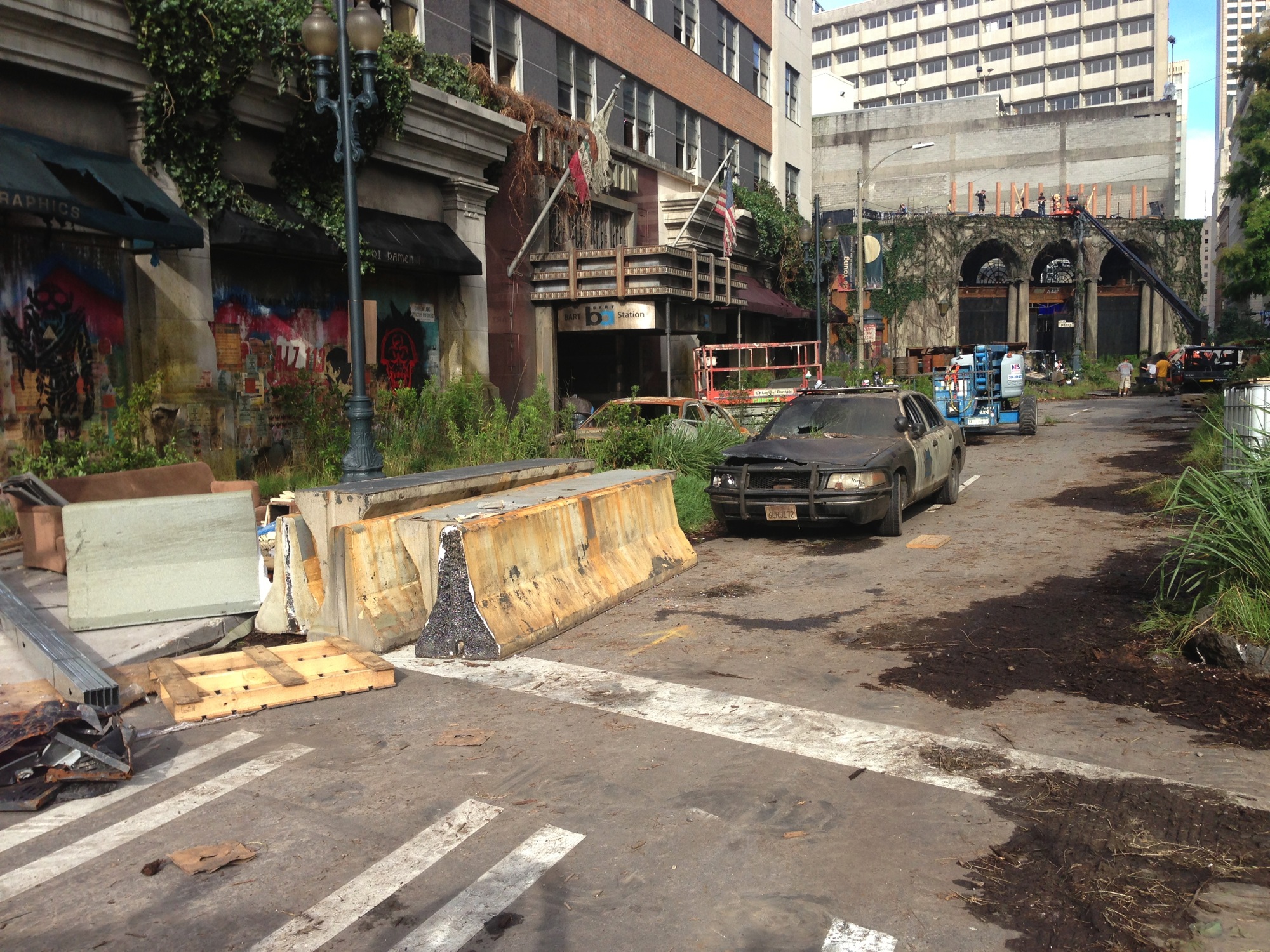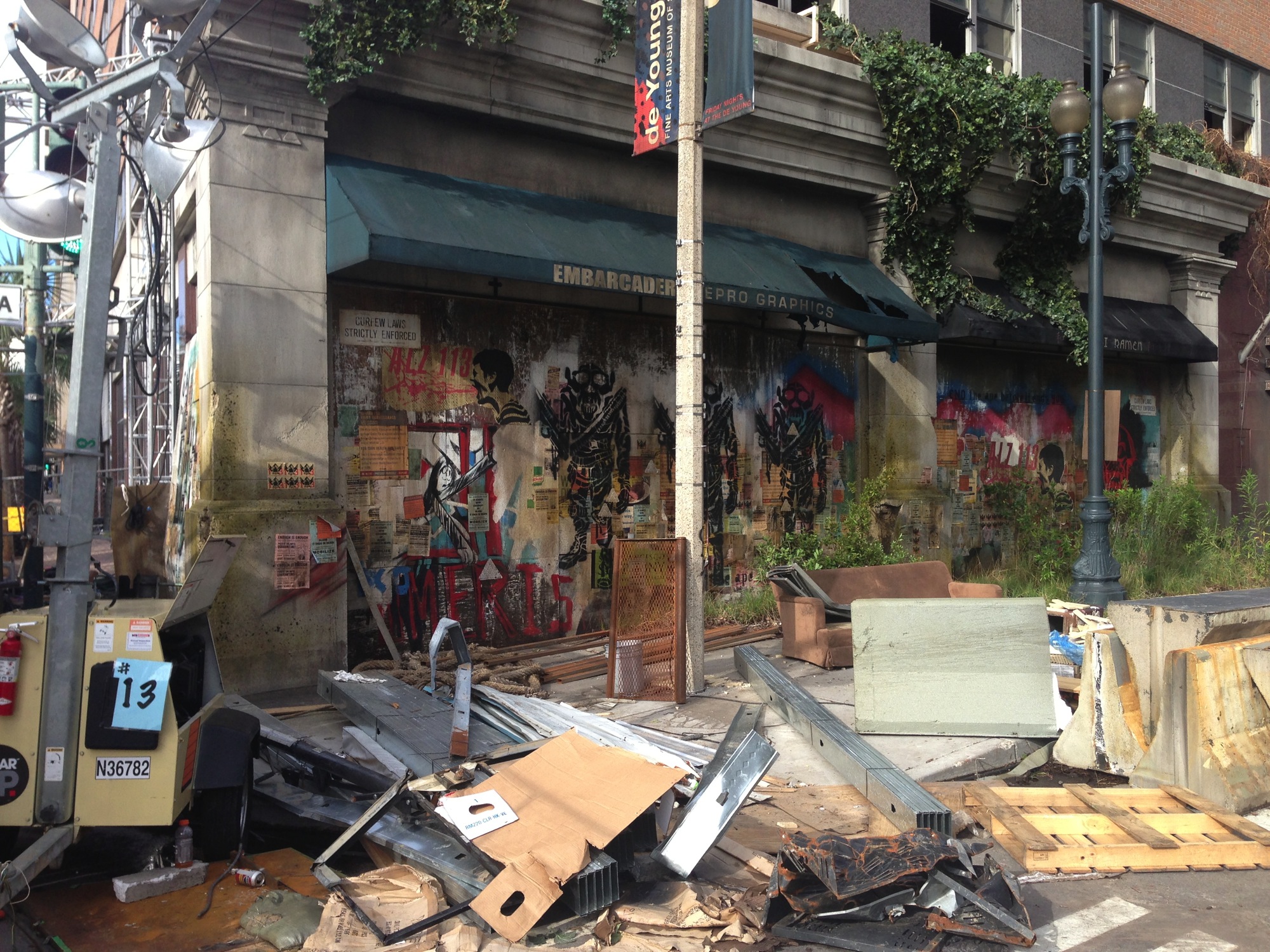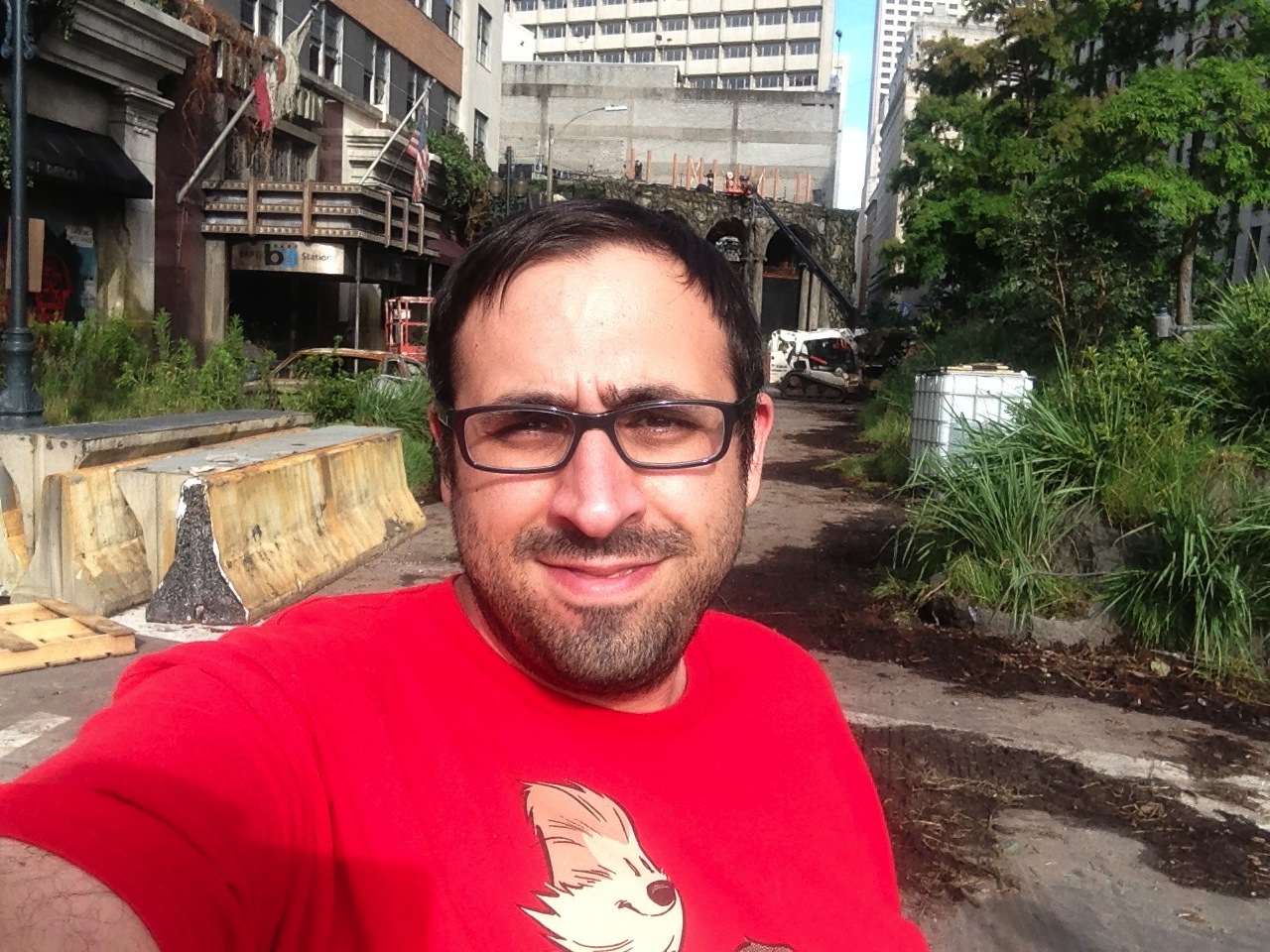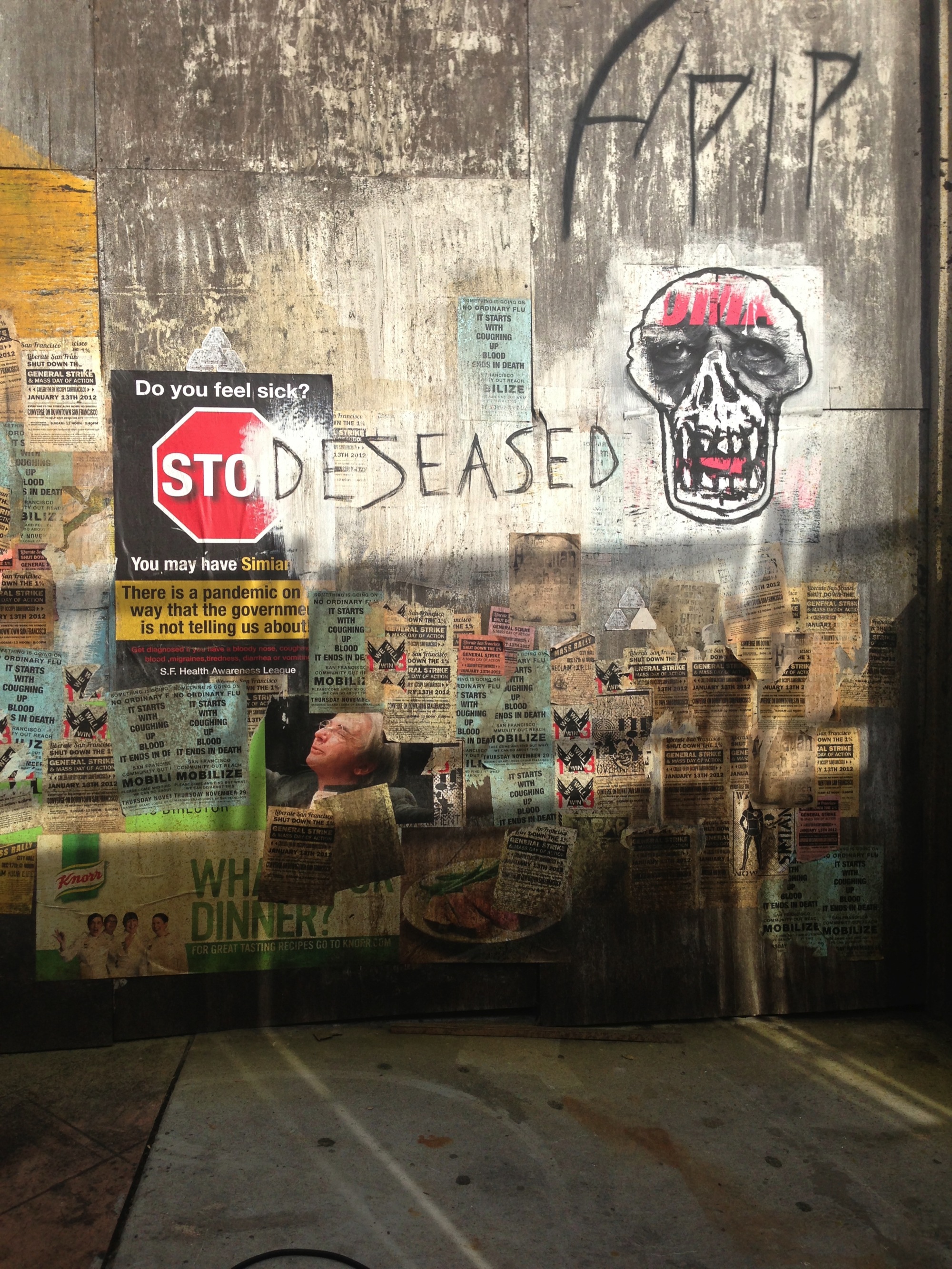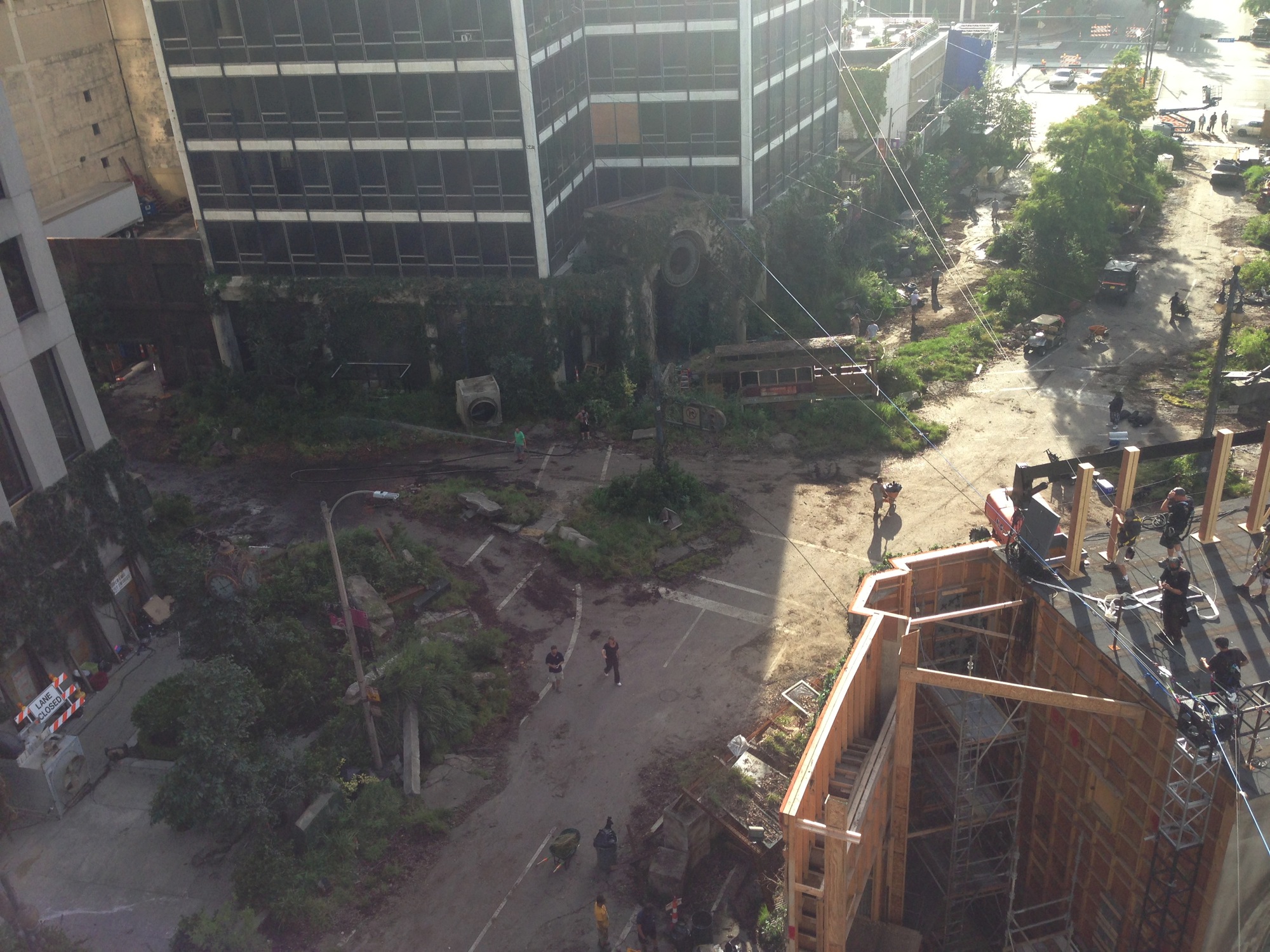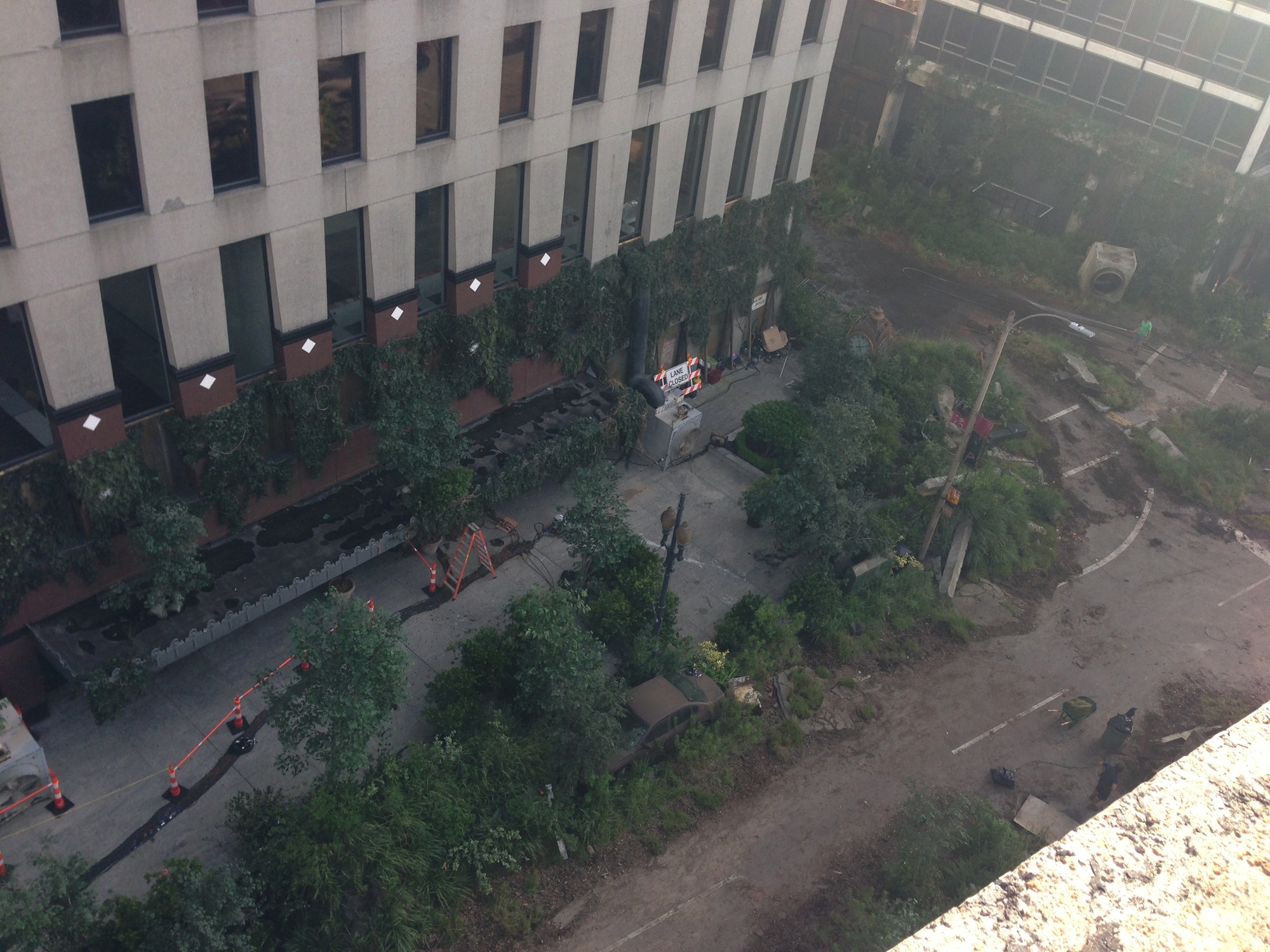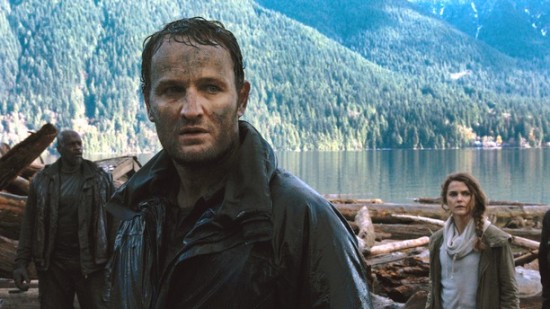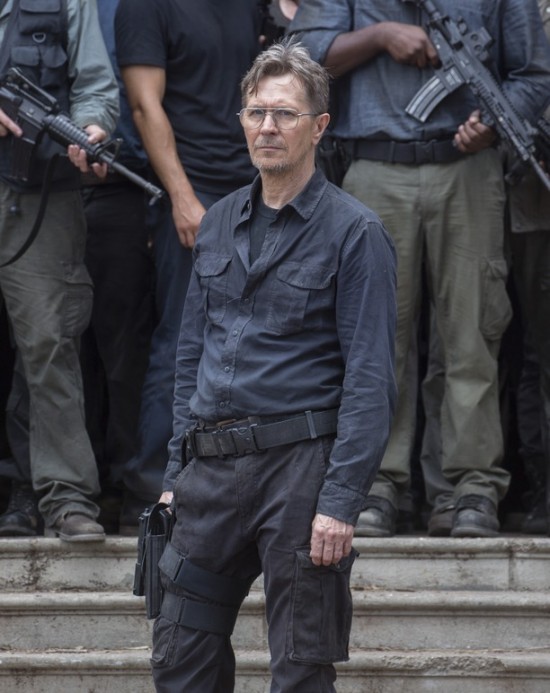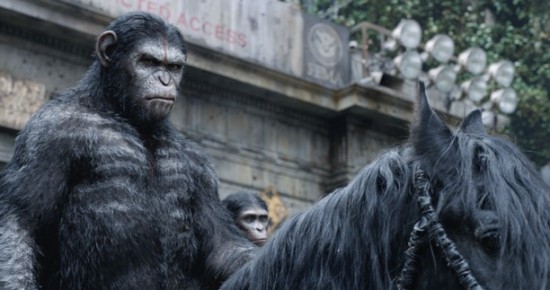50 Things I Learned On The Set Of 'Dawn Of The Planet Of The Apes'
On June 3rd 2013, I flew to New Orleans, LA to visit the set of Fox's Rise of the Planet of the Apes follow-up Dawn of the Planet of the Apes. There, I learned a great deal about the Matt Reeves-directed sequel. After the jump, read about my Dawn of the Planet of the Apes set visit and discover the secrets behind the next chapter in the Planet of the Apes series.
Dawn of the Planet of the Apes Set Visit Report
The Story
Rise of the Planet of the Apes takes place 10 to 15 years after the last movie. The first ten minutes of the film will help fill in the time gap. We'll see a flash of news reports showing the human situation becoming increasingly desperate.
Alz112, the virus that spread around the world in the Rise of the Planet of the Apes, is referred to in this movie as the simian virus. You may remember that Alz112 is a easter egg reference to the running time of the 1968 Planet of the Apes film.
It is presumed that James Franco and Frida Pinto's characters died from the virus. We do get some closure with respect to what may have happened to them at some point in the story. In fact, in the Rise of the Planet of the Apes script James Franco's character Will Rodman died. They even shot the sequence, but it didn't make the final cut of that film.
The human population was 90 percent decimated, but there are still small pockets of human survivors living on the planet.
Caesar has led the apes to Muir woods; there he has grown a community of nearly 2000 apes. Gorillas live in the nests at the base of the camp, orangutans live in the trees above.
In the beginning of the movie Caesar has tried his hardest to stifle any of his own human mannerisms, and struggled to find his inner ape. One thing Matt Reeves loved in Rise of the Planet of the Apes was how Caesar was always grappling with his situation. In this film we see pieces of that.
The apes have sporadically seen humans in the city, but over the last two years the sightings have been much less frequent. The apes have become unsure if the humans have survived.
The story follows a civilization of roughly 1500 humans and about the same amount of apes. There is a peace established between the humans and the apes, but we know war is somewhere on the horizon.
The apes are 15-20 percent smarter since we last saw them. In this movie we are seeing the dawn of the apes' civilization. In the script stage, the ape community was partly based on early Native American communities. They are starting to build their culture and communicate with each other. They now have rules to living and they have developed a code of ethics. All of the apes know how to use sign language but they vocalize more in this movie (with grunts and singing) as they are developing their own language. However, talking is more of a device used when they're interacting with humans.
The younger apes, the new generation, are much more adept. The children have lived away from humans since they were born, so apes like River only know the humans from the stories they have been told by the elders.
The Planet of the Apes reboot was originally planned as a trilogy, so this would be the second chapter of the story. That said, Producer Dylan Clark says they will make as many films as the characters demand, not just three films: "There's no reason we couldn't have eight"
Photo Notes: The day before I was to visit the set, a fellow blogger and I accidentally walked by the set while exploring the city a few blocks away from our hotel. We aren't normally allowed to take photos while on set, but these photos were taken from street view before my visit. They were still setting up, but these shots give you an idea of the insane production design involved with this sequence:
The Set
The scene we observed in progress is from the first act of the story: the first time the apes and humans realize they other side still exists, a meeting in downtown San Francisco. Caesar brings the apes to the city to show their strength and to try to tell the humans not to intrude on their home of they'll push back.
Nature has started to reclaim the city, as the San Francisco set looks like a scene from one of those "life after humans" television specials.
The set we saw is a couple blocks of Downtown San Francisco. They recreated streets in the Embarcadero area leading up to the ferry building. The streets are muddy, filled with trees and planets that have overgrown and are taking over. The ferry building has vines covering it. Remnants of 2013 are on some of the buildings. A dirt-covered Muni bus lays abandoned in the street in between some shrubbery. A billboard which took a suicide dive from one of the skyscrapers lays destroyed in one of the streets. A few abandoned, rusted-out cars have greenery growing out of and around them. A huge FEMA van is at the end of the street. A cable car is in a small ditch with grass growing on the roof. Huge 15 feet high metal gates topped with barbed wire block the ferry building.
San Francisco is a shell of its former self, and there are some signage remnants from when the plague was in full force. Flyers warning of the virus, curfews, and such still cover the walls a decade later. There was Banksy-inspired street art showing a human throwing up blood.
The humans are trying to create power with whatever batteries they have saved over the years. The apes have something the humans need, which is why they come in contact with each other. Malcolm and his team of human survivors are trying to locate a dam which could provide some power for the humans. Caesar sees the humans are struggling and he wants to help them but he also wants the apes to live with security. Caesar decides to help Malcolm and this uneasy alliance upsets the ape community.
Production
We visited the set on day 37 of 91, three months into shooting.
Producers confirmed that Dawn has a bigger budget than Rise, but we were not told how much more. Production spent $80 million in New Orleans and hired 500 locals.
Weta has returned to do the visual effects for the sequel. This film has many more visual effects shots than the last film.
The biggest obstacles in visual effects on Rise were in the legs and the lips of the apes. Weta believed those trouble areas are fixed going into production on Dawn.
For this movie they filmed in rain forests in Vancouver. Only two scenes will be shot on a soundstage, a location from the previous film which returns in this story (Caesars' old home) and the interior of a dam. Both stages will be shot at NASA in New Orleans.
For the San Francisco set, production took advantage of an area with buildings which are waiting to be rehabbed. The one-block area of New Orleans that was used for the San Francisco set includes a building which had a fire in 1971 and was never reopened — the real life destruction adds to the post apocalyptic look of the area. They shut down this four block area for over six weeks.
The shot the film in native 3D with an Alexa camera. Shooting in 3D requires a minimum of five extra people on the crew. We were told they are aiming for a more subtle 3D look than the average blockbuster uses.
The production encountered many problems during the first week of shooting. They were filming on location in the forrest in Vancouver where it was raining, and the 3D cameras were not cooperating.
The Characters
Jason Clark plays the human lead of this story named Malcolm, an ex-architect who is the leader of a pocket of human survivors.Kodi Smit-McPhee plays Malcolm's son. He has grown up in this post apocalyptic world and doesn't know anything before that.Gary Oldman plays the chief of police in this Bay Area group of human survivors.
Prooducer Dylan Clark compared Dawn of the Planet of the Apes to the Godfather films, saying Caesar is like the don of the apes community.
Rocket has become Caesar's right hand man but is struggling with the newly-developed mind.
Toby Kebbell plays Coba, Caesar's trusted advisor, and a key player in Caesar's army. He is a constant reminder that humans are not to be trusted. Coba has sight in only one eye. His backstory is that he spent 30 years in a lab, and was experimented upon hundreds of times. He had three brothers, all of whom died in the medical center. Coba was played by a stunt man in the first film, but they gave the character a larger role in this movie and wanted an experienced actor. Toby Kebbell had to do a performance capture screen test with Andy Serkis to land the role.
River is Caesar's first born. River is the equivalent of a human 15-year old boy. He is trying to find his place in the community and having to live up to his father in the community, but us also rebellious and wants to grow into his own person. River does look up to Coba because he admires his strength.
Very early in this story Caesar's wife gives birth to an infant.
Maurice is the seeer, the watcher, an observer. He's old and big but the character is again played by 120 pound woman named Karin Konoval.
Performance Capture
The first film had the largest outdoor performance capture set yet created. This film raises the bar, with more performance capture in outdoor practical locations than any other film ever filmed. Andy Serkis calls it the most ambitious motion capture production to date.
Serkis' performance capture consulting company Imaginarium handled some of the apes casting process, and some early tests were handled through the company.
Terry Notary, ape movement specialist and the performance capture artist behind Rocket, returned for the sequel. Terry still plays many apes in the film, taking on background generic characters when needed. Notary has a background of working for Cirque du Soleil for five years.
The ape performers have new performance capture suits which are said to be much more durable than the ones in the first film. The ones used in Rise would break daily. The new performance capture suits are waterproof, which means they can be dragged in the mud and keep on working.
The ape actors wear lacrosse gloves so they can use their hands to walk on the hard ground.
The apes wear helmets which feature a camera on the end of an arm that goes in front of their face, to capture all the dots on their face during their performances.
In the film, the apes sometimes travel on horses. The horses were freaked out at first by having humans acting like apes while riding them but they eventually got used to the unusual movements.
WETA hung 80 motion capture reference cameras around the huge San Francisco set.
The apes scenes are filmed in two different ways: once on set, and then again in a performance capture room called "the tank." In the tank, the ape actors repeat the performance with more intense performance capture technology. "The tank" has three tiers of cameras in a small room. The apes will film in the tank for about a month after production, which doesn't count as part of the 90 or so days of principal photography.
One scene took 80 takes on set; that was before they shot the other half of the ape performance capture in "the tank" after principal photography ended.
The performance capture actors have a term, "selling out," which refers to any ape actor standing an inch too tall. That inch is the difference from being an ape and being a human. Its also the difference between being comfortable or uncomfortable. The ape actors often consult with each other and Terry to ensure they don't "sell out."
Before principal photography began, the ape actors spent two and a half weeks at an "ape camp" in a Vancouver studio run by Terry and the stunt guys. The actors were led through various exercises to become accustomed to the way the apes should move. They played games to get in the mindset of the characters.
Karin Konoval wore extra 10 pound weights on each arm during sequences to sell the weight of her character in the performance capture.


